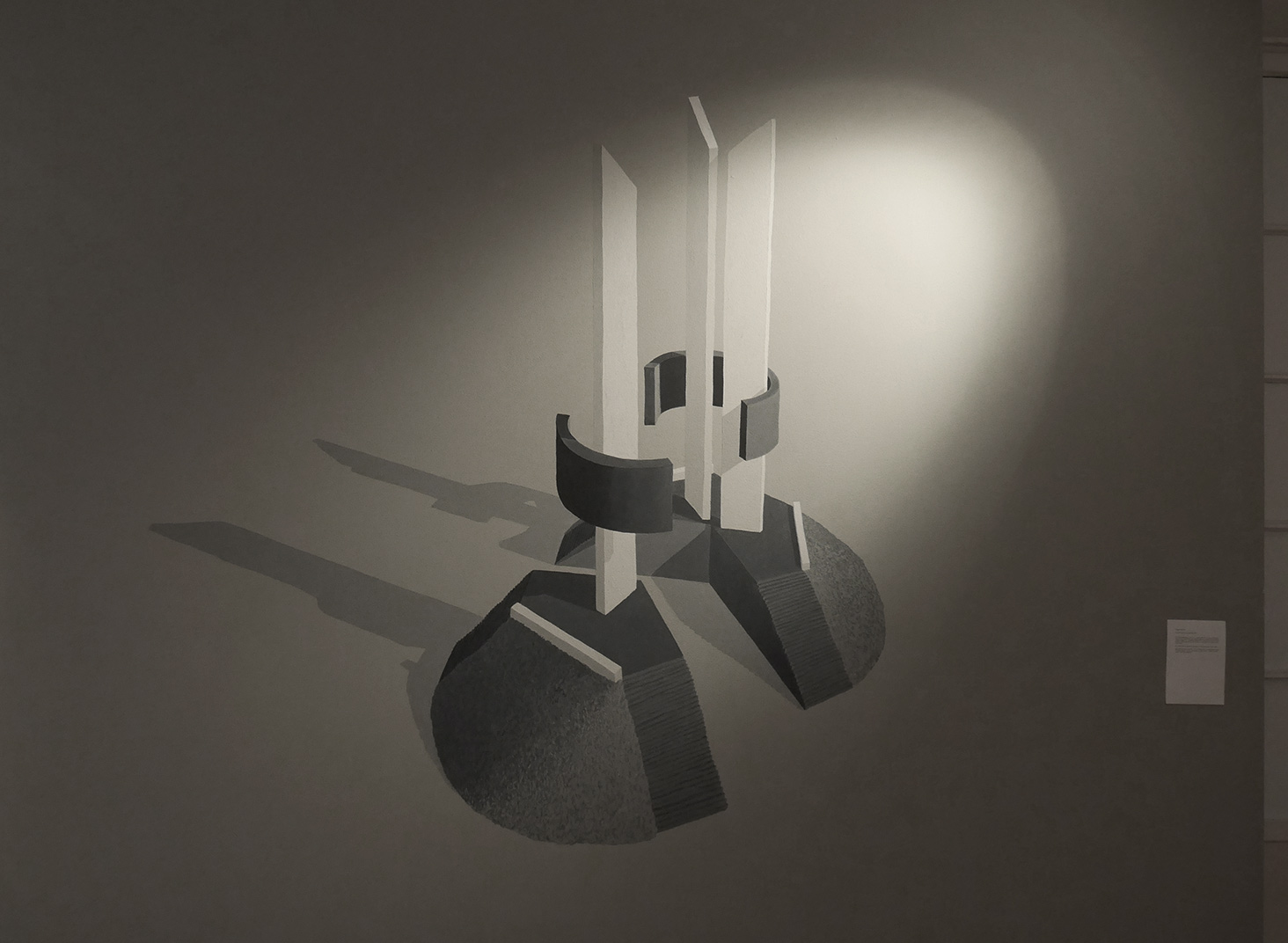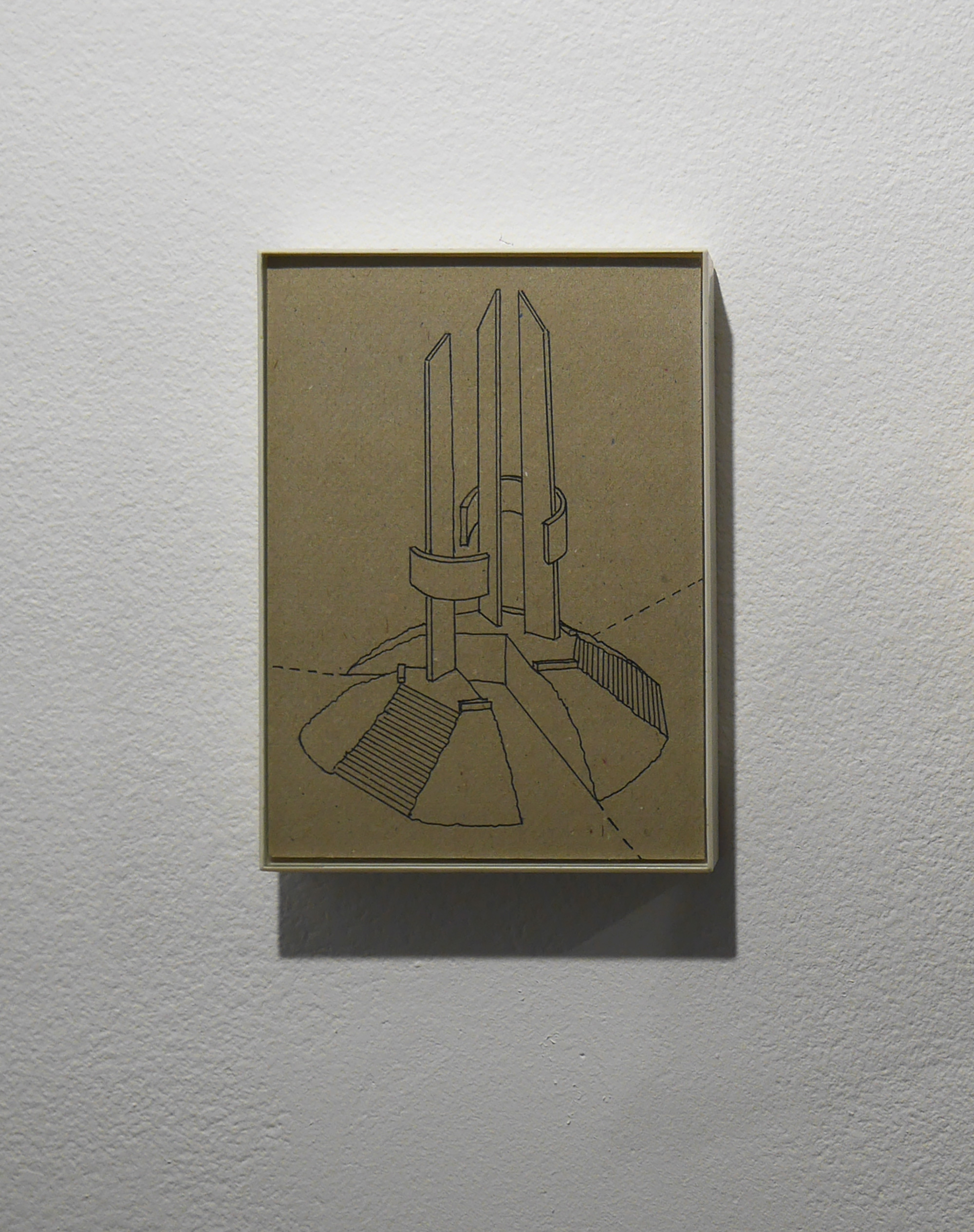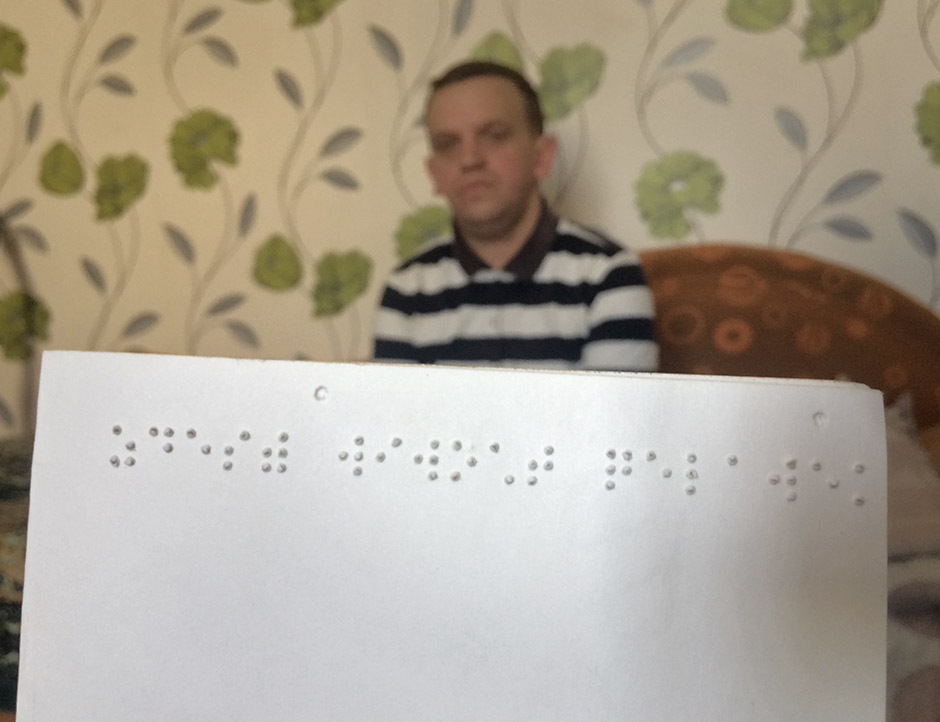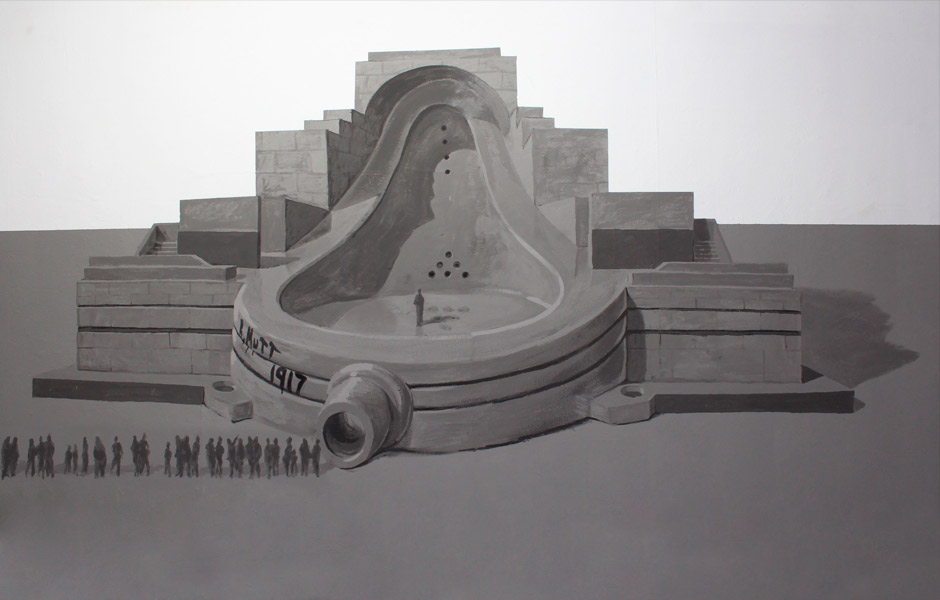Atlas of Tectonic Landscapes cycle:
ID: C9
Atlas of Tectonic Landscapes
Date:
Since 2020
Introduction:
A cycle about large-scale geopolitical upheavals: military conflicts, pandemics, protest waves, remaking of the world order, cultural revolutions – by way of example of the turbulent times in the Eastern European region. The project incorporates found images and methodological approaches from other cycles such as Social Marble, We Are Stern Consumers of Cultural Revolutions, and Border-Gap, which also examine the context of historical and cultural layering and the topic of faults and borders. This cycle presents mental landscapes in the context of current news nervous storylines. Different imagery collides in the works – geometric plates are layered on different backgrounds depicting landscapes and spaces. Taking the ideas of avant-garde art of the 1920s as a basis, the artist has transferred abstract forms into the context of the realistic, the twilight, the romantic and the expressionistic, creating an atlas of images of colossal transformations in culture, politics and, more broadly, human consciousness.

Works and events within the cycle:
2019:
Friendship Mound
(Three Sisters)
W73.1
︎ technical info
Mural
For group exhibition Love Hope Faith. In Honour of, Exhibition Bureau / Polish Modern Art Foundation, Warsaw, Poland
Mural
For group exhibition Love Hope Faith. In Honour of, Exhibition Bureau / Polish Modern Art Foundation, Warsaw, Poland

Mural Friendship Mound
(Three Sisters),
Exhibition Bureau /
Polish Modern Art Foundation,
Warsaw, Poland,
2019
(Three Sisters),
Exhibition Bureau /
Polish Modern Art Foundation,
Warsaw, Poland,
2019
The mural depicts the Three Sisters mound – a monument erected at the junction of the borders of Belarus, Russia and Ukraine. Until 2013 (the beginning of the conflict in the region in connection with the annexation of the Crimea and the beginning of hostilities in eastern Ukraine), this was a direct symbol of the sisterhood of the three peoples. Borders were opened near the kurgans, annual cultural festivals of three countries were held.
On the image, the barrow is represented as a pie, a third of which is already cut off.
Today the monument is heavily destroyed. In 2019, the Belarusian authorities made another peacekeeping decision to restore it as a symbol of friendship between nations and hope for ending the conflict.
On the image, the barrow is represented as a pie, a third of which is already cut off.
Today the monument is heavily destroyed. In 2019, the Belarusian authorities made another peacekeeping decision to restore it as a symbol of friendship between nations and hope for ending the conflict.

Graphic Friendship Mound
(Three Sisters),
2014
(Three Sisters),
2014
2017:
Light Source
W52.1-2

Mural Light Source,
Korpus, Minsk, Belarus,
2017
Korpus, Minsk, Belarus,
2017
The installation is based on the story of Alexander Zidovich – a resident of Molodechno, who lost his sight quite early. For 18 years he has been working at the Enva enterprise, which is part of the Belarusian Association of Visually Impaired Persons, which specializes in the manufacture of electrical products.
Alexander told that when he returns home after work, he turns on the light that he does not see. “A man lives here!” – Alexander proudly explains his tradition.
The hero is deprived of the opportunity to perceive the electromagnetic radiation of light, but he gives up the light differently: literally collecting electrical products, including light, sharing his infectious optimism, despite the vicissitudes of life. His statement is in the form of an image of a five-storey elongated block house, where the phrase “A man lives here” is lit outside the windows. The image of the light slogan is placed on a long tabletop with a bench. In front of the tabletop is a huge image of the outlet.
Alexander told that when he returns home after work, he turns on the light that he does not see. “A man lives here!” – Alexander proudly explains his tradition.
The hero is deprived of the opportunity to perceive the electromagnetic radiation of light, but he gives up the light differently: literally collecting electrical products, including light, sharing his infectious optimism, despite the vicissitudes of life. His statement is in the form of an image of a five-storey elongated block house, where the phrase “A man lives here” is lit outside the windows. The image of the light slogan is placed on a long tabletop with a bench. In front of the tabletop is a huge image of the outlet.


Sergey Shabohin created
an installation Light Source
on the basis of the meeting
with unseeing Alexander
Zhydovich
︎ info about meeting
an installation Light Source
on the basis of the meeting
with unseeing Alexander
Zhydovich
︎ info about meeting
2017:
Divided Solidarity
W46.1
︎ technical info
Murals
For solo exhibition Sergey Shabohin: Divided Solidarity, during the festival Artes Liberales 2017, Ў Gallery, Minsk, Belarus
Murals
For solo exhibition Sergey Shabohin: Divided Solidarity, during the festival Artes Liberales 2017, Ў Gallery, Minsk, Belarus

The wall painting created in the non-profit gallery of modern art "Ў" (Minsk, Belarus) in 2017 consists of three parts. The first part depicts a building in the 70s in Minsk. The building is decorated with one of the most iconic works of monumental art in Minsk of the Soviet era – a bas-relief of Solidarity. This is the former Fashion House, where KFC fast food restaurant is located today. We see people leaving the restaurant and the line continues in the second part, where the crowd, one by one, crawls under the Lenin monument. This monument stands at the Government House in Minsk and and approaching it, as well as photographing the monument from behind is strictly prohibited by the state. The crowd moves on to the building, which is a synthesis of Lenin's mausoleum on Red Square in Moscow and the work of Marcel Duchamp's The Fountain. Thus, it is an image of the synthesis of the two revolutions of 1917: in society and in art. The queue of people has accumulated in front of the urinal, because there you can only enter individually. The entire painting comments on the complex processes taking place in Belarus a century after the revolution: consumerism and consumerism, punitive control and sacralization of communism, divided solidarity and extreme individualism.



Murals
Divided Solidarity,
Ў Gallery, Minsk, Belarus,
2017
Divided Solidarity,
Ў Gallery, Minsk, Belarus,
2017